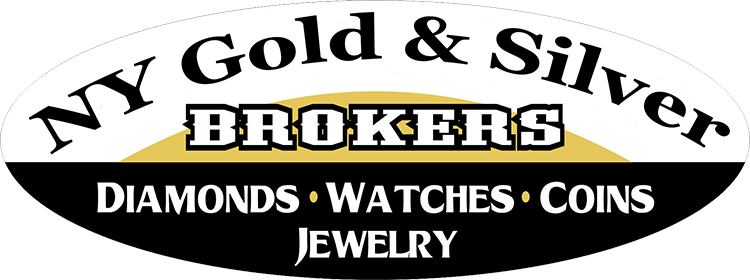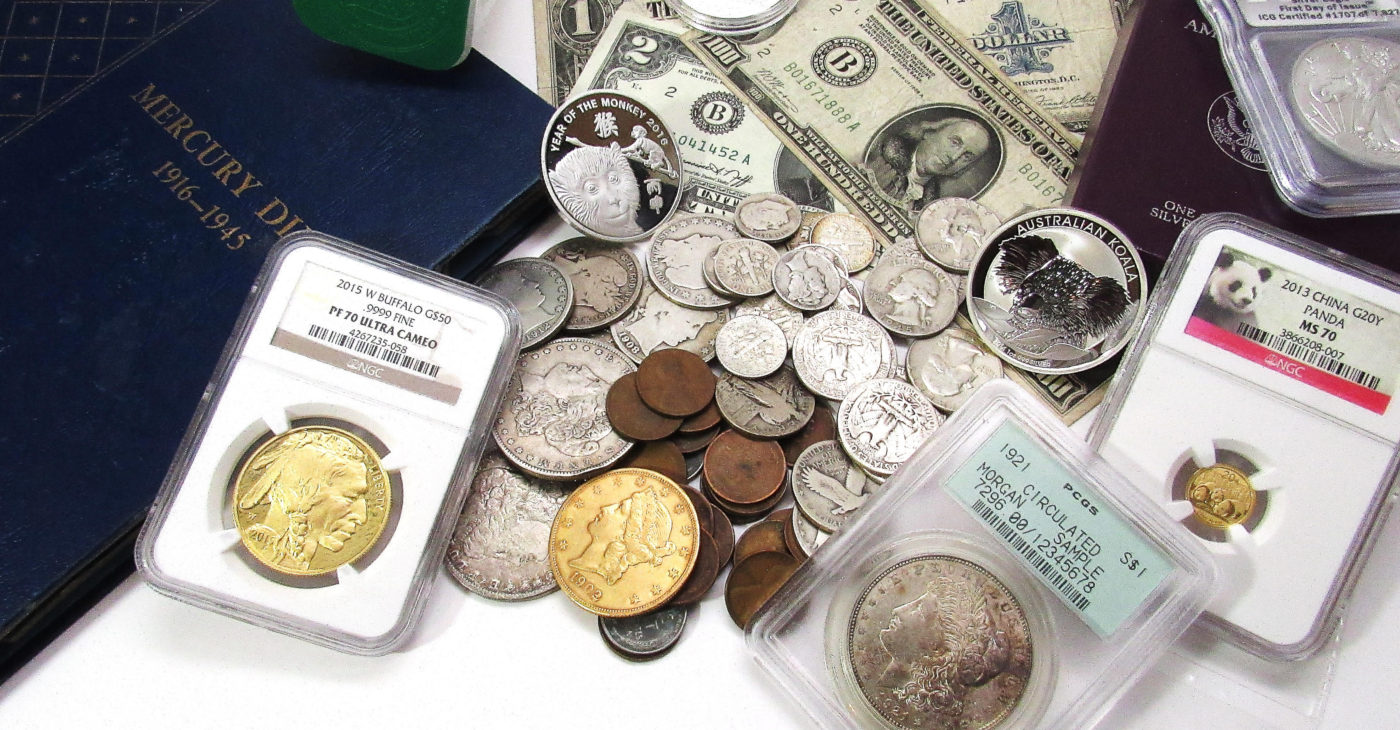Have you ever wondered what that coin collection could be worth that is sitting in the attic or basement? Have you been spring cleaning and need to make some room in your house? Your gold and silver coins may be worth a lot more than you think.
The first thing you should check when going through your old silver U.S. coins is if they are, in fact, silver!
Coins from 1964 and earlier are 90% silver – except nickels. Although many pre-1964 coins or “junk silver” coins are sold for melt value, it’s very important to know that certain coins, depending on their date and/or mintmark could have numismatic value and be worth much more. Numismatic coins are rare or valuable and have an external value above and beyond the base metal value of the precious metal.
In this, the first installment of a multi-part blog, we will begin to discuss the coins you may find laying around – and what they may be worth!
Wartime Nickels (1942-1945)
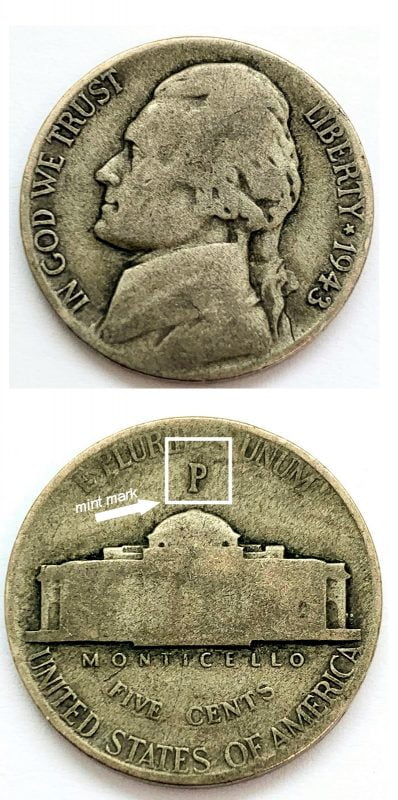
Some nickels have silver content and are considered wartime nickels. These nickels are from 1942-1945. The production of the first wartime nickels began in Philadelphia at the Philadelphia mint, notice the P indicating the mint mark.
For people to recognize the difference of this new composition – which consisted of 35% silver – there was a large mint mark that was placed on the reverse (back) of the coins above Monticello. The mint marks “P” “D” and “S” represent, Philadelphia, Denver, and San Francisco Mints. Usually, when a coin had no mint mark it meant that it was minted in Philadelphia. That later changed in 1980 when a “P” was added to indicate it was minted in Philadelphia.
The wartime nickels were an exception to the standard Philadelphia ‘no mint mark’ rule, as they added the large “P” above Monticello.
Buffalo Nickels (1913-1938)
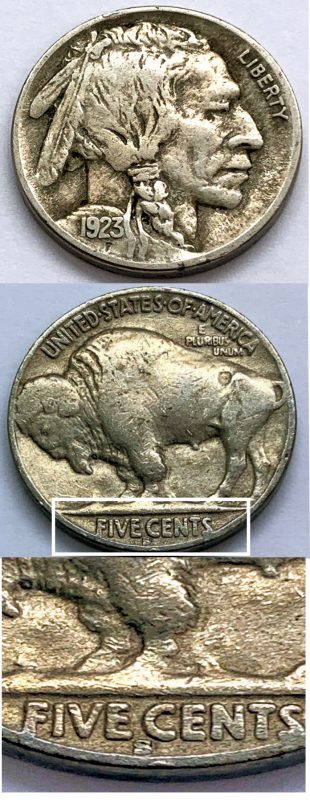
One of the more commonly seen nickels is the buffalo nickel. First minted in 1913, it actually has no silver content. The “D” and “S” mint marks, if present, are centered under the “FIVE CENTS” on the reverse. As is standard, coins minted in Philadelphia have no mint mark on this coin.
Except for certain key dates, buffalo nickels are usually purchased as “full date”, “partial date” or “no date” coins. A later blog will be posted on how buffalo nickels were turned into examples of the sculptural art form known as ‘Hobo nickels’.
Liberty “V” Nickels (1883-1913)
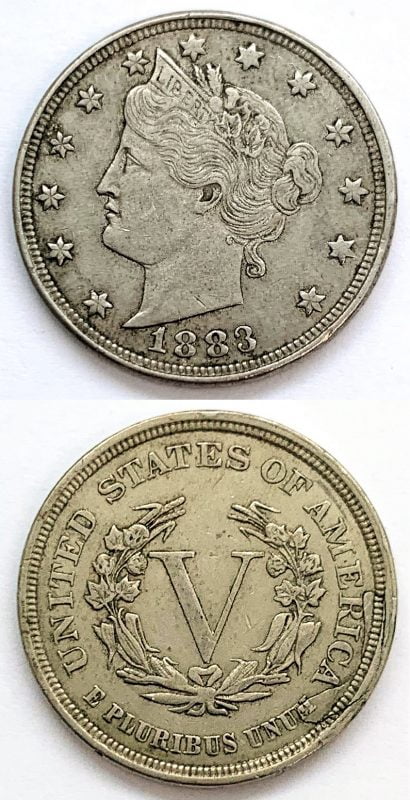
Liberty nickels are often referred to as V nickels or V-back nickels because of its design with the V on the reverse for the number 5 in roman numerals. These nickels were minted from 1883-1913 and do not have any silver content, however we purchase them quite often.
Roosevelt dimes (1946-1964)
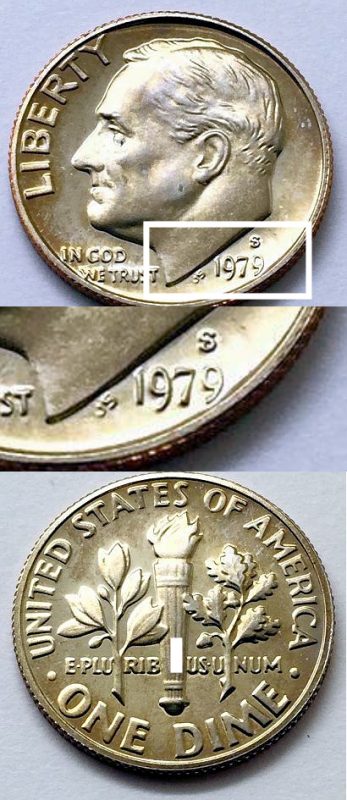
Although Roosevelt dimes are still the current currency, the dimes that are 90% silver are from 1946-1964 as well as the modern silver proof dimes (typically found in silver proof sets) from 1992 to 2020. There are only 4 Roosevelt dimes worth looking for in circulation that are rare and hard to find.
#1. 1964 Cooper-Nickel clad Roosevelt error dime. This happened as the mint was moving production from silver to copper-nickel
#2. 1965 Silver Roosevelt error dime which is another rare and transitional error
#3. 1982 no P Roosevelt Dime where the new “P” mintmark which started in 1980 for the Philadelphia Mint was accidentally omitted
#4. 1996-W Roosevelt Dime. The “W” mintmark is from the West Point mint and these dimes were not issued for circulation. It is only from people breaking up mint sets that any of these dimes can possibly be in circulation
Mercury dimes (1916-1945)
Barber dimes (1892-1916)

These older dimes are all 90% silver and have key dates worth looking into. The mint mark for the Mercury dimes can be found on the reverse, to the left of the fasces. The mint mark for the Barber dime can be found on the reverse, under the wreath.
Mercury dime is also commonly referred to as a Winged Liberty Head dime and is probably the most common dime sold as silver bullion next to the Roosevelt dime. The Mercury dime has a few keys dates that include the 1916D, 1921, 1921D, 1942/41, 1941/41D.
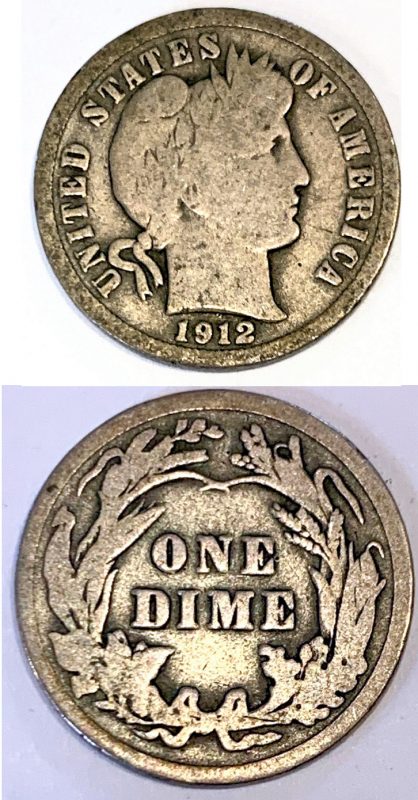
Barber dime key dates include the 1892S, 1894O, 1895, 1895O, 1896O, 1896S, 1897O, 1901S, 1903S, 1904S
Much older dimes that are seen less frequently include the Seated Liberty dimes from 1837-1891 and the Capped Bust dimes from 1809-1837
Seated Liberty dimes (1837-1891)
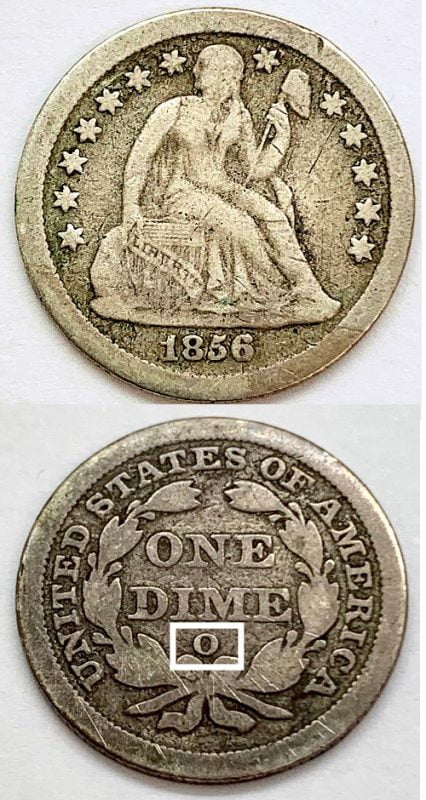
Seated Liberty dimes come in many varieties from 1837-1891. There are several varieties that exist for the Seated Liberty Dime because of design changes in the drapery, arrows, stars, and legend.
These types are:
Type 1: No Stars (1837-1838)
Type 2: No Drapery (1838-1840)
Type 3: Stars Obverse (1840-1860)
Type 4: Stars Obverse Arrows at Date (1853-1855)
Type 5: Legend Obverse (1860-1891)
Type 6: Legend Obverse Arrows at Date (1873-1874)
As with many coins, the value depends on several factors, including key or semi-key dates. For the Seated Liberty, some to look out for are the following:
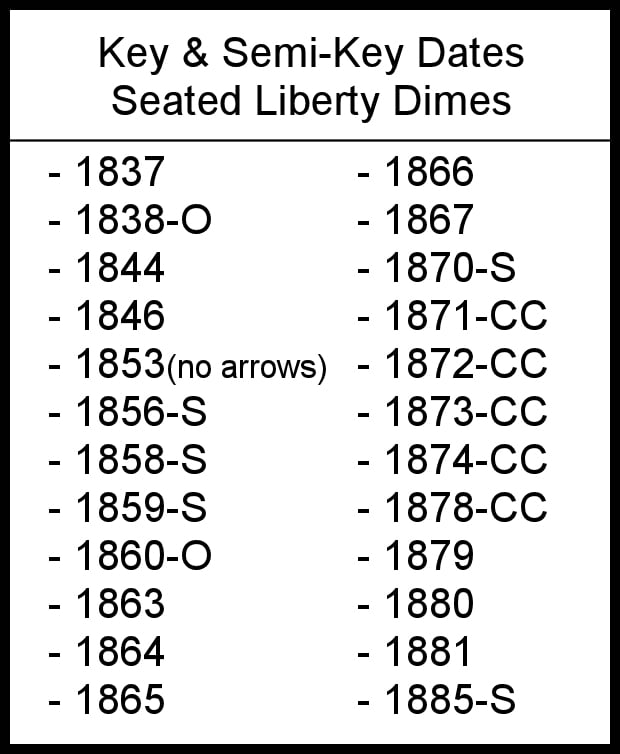
Capped Bust Dimes (1809-1837)
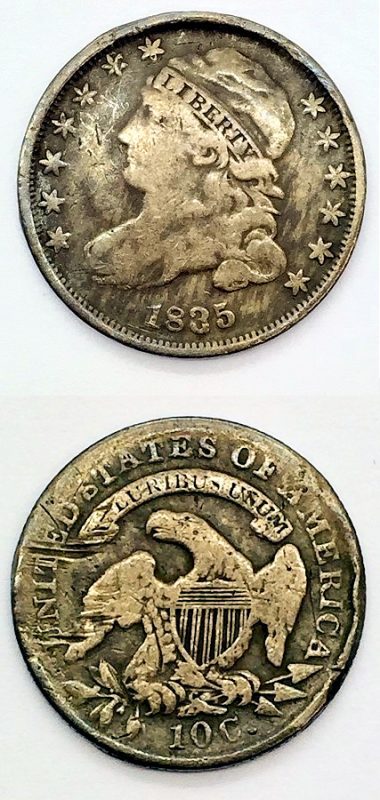
The Capped Bust dime comes in two Types. Type 1, Large Dentils from 1809 to 1828 and Type 2, Small Dentils from 1828 to 1837. Some years were skipped during the coinage of the Type 1 Capped Bust Dimes. Although there were only 51,065 coins minted in the initial year in 1809, the 1822 Capped Bust Dime is considered more of a rarity – and worth more at every grade.
Due to the high mintage of certain years, the rare coins come in more specific varieties and proof strikes. In the higher grades, many dates can be worth tens of thousands of dollars. In lower grades, a coin like the 1829 curl base2 is a rarity, and worth more because of its variety.
Thank you for reading this first part of our multi-part coin blog series! If you find that you have any of these coins, and would like to get a free estimate, please call us at (845) 228-4653 .
